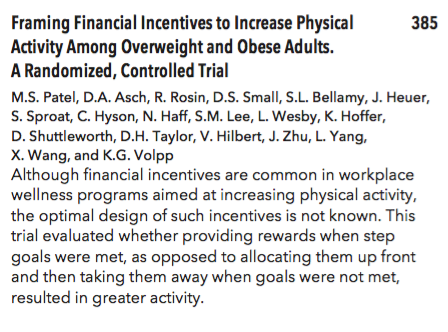Transparency is extremely important to us, so we are letting you know that we may receive a commission on some of links you click on from this page. See our disclaimer.
We've reported previously on “the most effective ways to change unhealthy lifestyles” in employees, as addressed in research by Dr. Kevin Volpp, MD, PhD.
Dr. Volpp is the Director of the University of Pennsylvania’s Center for Health Incentives and Behavioral Economics (CHIBE) at the Leonard Davis Institute of Health Economics (LDI). He also is a professor of both Medicine at Penn’s Perelman School of Medicine and Health Care Management at the Wharton School, and Vice Chair of Penn Medicine’s Department of Medical Ethics and Health Policy.
A recent piece published by the Society for Human Resource Management turns to Dr. Volpp, as well, in looking at the question whether a “punishment—or ‘stick'—works better to change people’s behavior than a reward—or ‘carrot.'”
Dr. Volpp served as co-author in a recent study, “Framing Financial Incentives to Increase Physical Activity Among Overweight and Obese Adults: A Randomized, Controlled Trial” that concluded: “Financial incentives framed as a loss were most effective for achieving physical activity goals.” Or, as SHRM quotes Dr. Volpp: “Most workplace wellness programs typically offer the reward after the goal is achieved. Our findings demonstrate that the potential of losing a reward is a more powerful motivator.”
Another approach for encouragement according to the SHRM piece: Focusing on “Efforts vs. Outcomes.” In other words, companies may want to consider rewarding the effort employees put into a wellness program, rather than simply the results.






0 Comments